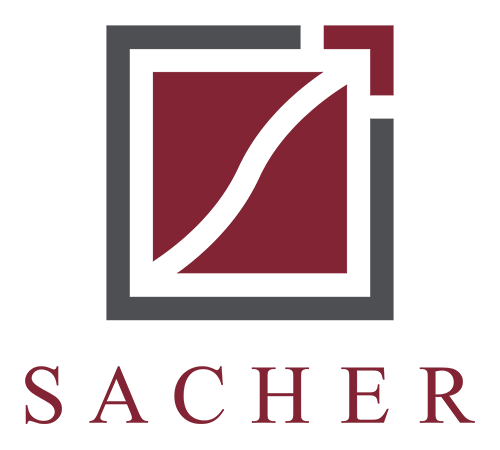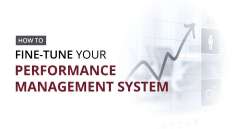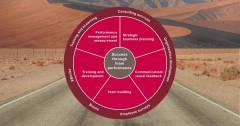You better be lean before you play these games.
Jack Welch
First, we shape our structure, then our structures shape us.
Winston Churchill
The purpose of the organizational structure is to provide a framework for achieving the predetermined long-term goals or strategy of the organization.
Many organizations are structured in a way that no longer supports the business strategy. The structure often does not accommodate opportunities or deal with threats arising from the internal or external environment, nor does it adequately provide for the achievement of the organization’s outputs and targets. There is no doubt that organizational structure affects the levels of performance that an organization can achieve in pursuit of its strategy.
In the past, organizations could survive in poor work environments and without regard to employee needs or total stakeholder satisfaction which includes the satisfaction of worker needs. Yet today, a great divide is evident in both the public and private sectors worldwide. Those organizations that are not creating a work environment that provides total stakeholder satisfaction are being out-performed by those that can. To survive and thrive in the future, organizations have to be restructured in line with a better understanding of how organizations work and redesigned to accommodate the changing values and rising expectations of a new generation of employees.
Organizations need to adapt to the changing values and expectations of their stakeholders. This means the successful implementation of the essential components of team performance. This month we are talking about organization structure - as Bill Creech said: There have been warnings of the many problems with the centralized, functionalized, matrix approach – but they have gone unheeded in even the most astute management circles.
Organizations that can provide a better working life for employees as well as produce a better quality product for external customers are holding a competitive advantage. The divide is evident in productivity, performance and, in the end, survival.
Many organizations today have policies, structures and management styles that perpetuate a work environment out of alignment with current employee needs. Past management practices and past leadership styles are still being applied, even though they are not in touch with the needs of the employees. Teams, rather than traditional structures, create the conditions that motivate people.
The overriding feature of the modern team-based structure is that it is designed around empowered teams responsible for autonomous outputs, rather than any functional or historical considerations. This structure is also characterized by the elimination of reporting levels and the simultaneous acceptance of additional responsibility by team members. Unlike the matrix structure, the teams and the overall structure itself is permanent.
The advantages of a modern team-based structure include:
- It is based on the sound logic of the core value-adding systems of the organization and is therefore easily understandable (for example, team 1 for process 1; team 2 for process 2 – the flow follows function).
- The flat structure eliminates managerial levels thereby facilitating communication.
- The total number of people required is usually fewer than in traditional structures.
- It is the best structure for obtaining a clear definition of outputs, performance measures and targets; and for reaching the targets. This, in turn, facilitates workforce empowerment and job satisfaction together with technical results.
Achieving the optimal organization structure begins with a question: Given a blank piece of paper and all
the developments in technology, information systems, increased understanding of human resources,
quality principles and the importance of the customer, how would we change our structure today to best achieve total stakeholder satisfaction?
The ideal structure would best suit the goals of long-term productivity gains and the needs of all employees in view of their changing values. The focus must shift to the creation of an environment where employees want to deliver results. This can be achieved by giving people what they need. And what people need is a sense of belonging; a unified sense of direction; meaningful work; challenge and goals; feedback on the results of their work; and an environment where contribution and excellence are encouraged. In short, the essential components of team performance must be embedded in the organization.
It is our contention that there is no one organization structure that is best. The best approach is a contingency approach; one which, ignoring dogma, determines the best structure in terms of the following criteria.
What structure is:
- best able to support or continue to support the overall business strategy;
- best able to accommodate the opportunities and deals with the threats arising from the internal and external environment;
- best able to achieve autonomous outputs, measures, and targets;
- best able to satisfy the current needs and values of all employees?
Detailed references and additional information can be provided on request, and questions are welcome. This email address is being protected from spambots. You need JavaScript enabled to view it.
TALK TO US ABOUT HOW WE CAN HELP YOUR BUSINESS
Book an obligation free clarity call to discuss our programs and your requirements.
Online Access, on our Learning Management System, or yours, to all five Sacher Associates courses:
- A Commonsense Approach to Business Planning
- Performance Measures Applied
- Performance Linked Communication
- Success Through Team Performance
- Performance Linked Learning
Discover how we can help your business increase productivity and improve performance:
- Discussion on consulting requirements
- Diagnostic review of your company
- Multiple User Access
- Access to Sacher Associates exclusive closed Facebook Group
- Customised courses and delivery solutions








